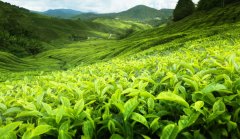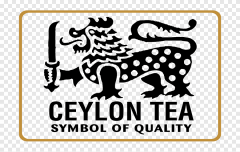A comparison of the differences between Chinese Tea Culture and Japanese Tea Culture the basic knowledge of the introduction to Tea ceremony
Chinese tea tradition
It is said that Emperor Shennong discovered tea more than 5000 years ago, when dry tea fell into a pot of boiling water. He liked the taste and vitality of the mixture and commissioned the tea garden. In China, different dynasties rise and fall. Moreover, with each dynasty, the use and preparation of tea have changed and developed. The unification of the country has changed tea from a drink mainly enjoyed by the upper class to a ceremonial part of Chinese popular culture.
In today's China, tea is not only an inseparable part of life, but also a bastion of national history. Green tea is the most popular variety, followed by oolong tea and Pu'er tea (fermented tea). The widespread cultivation of tea across China means that each tea has a slightly different taste, which is unique to the province, due to its geographical location and climate. Tea culture is regarded as a form of elegant art in China, and the ability to distinguish the nuances of tea aroma is a highly respected professional field.
In China, cooking, serving and tasting tea is not only a kind of etiquette and art form, but also a way of hospitality. The art of cooking tea is called "tea ceremony", and the art form of serving tea is called "kung fu". Each ceremony has its own detailed process and strict code of conduct.
If the wedding ceremony is too complicated or too scary for a guest like you, be sure to follow the direction of the host. But make sure you don't get too hasty or impatient. In China, impatience on the tea ceremony is considered an indescribable affront. Savor it carefully, sip it slowly, and hold the cup in both hands.
Xizang's Tea tradition
Salty butter in a cup of tea?! Right. In the cold climate and high altitude of Xizang, its traditional tea "cloth tea" is made of milk, salt and yak butter. Pemagour black tea needs to be boiled for several hours, then add other ingredients and stir until it is as thick as soup. Butter tea, often called "butter tea", is traditionally served in small bowls.
Buttered tea is also served at Xizang's important ceremonies and occasions. At Sherpa funerals, relatives of the deceased usually invite guests to have a cup of butter tea.
The master kept pouring buttered tea into the bowl between sips. So, if you don't want to drink it, don't touch the cup before you leave.
The tea tradition in India
Tea was introduced into India by the British in the 19th century and occupies a special position in the daily life of India. In India, teahouses and tea stalls can be found on every street corner. Entertain important guests and drink at least three times a day, sometimes at the same time. Tea is an integral part of Indian culture, and the diversity of the country is reflected in the nuances of tea making in different regions.
Often called "Chai tea", tea is both sweet and spicy in India. Depending on regional recipes, spices such as cinnamon, nutmeg, cloves and ginger may be used. It usually goes with milk, but black tea is also a popular choice.
India is also one of the major exporters of tea. Darjeeling and Assam grow high-quality tea in two areas of northeastern India. Darjeeling Tea and Assam tea are also used in many different English, Irish and Scottish breakfast mixtures.
Taiwan's tea tradition
The history of Taiwan Pearl Milk Tea can be traced back to the 1980s. It is a kind of chilled and sweet drink. An iced tea, usually black, oolong, or green tea, on which syrup and milk powder are added. Bubbles are small cassava balls added to the mixture.
Taiwan's pearl milk tea is so iconic and an integral part of the region's culture. Milk tea shops are also popular in Europe, Asia and the United States.

The tea tradition in Hong Kong
Hong Kong milk tea contains a lot of caffeine, smooth taste and rich flavor, and is the main product of Hong Kong's vibrant cafes and restaurants. This kind of tea is often called "silk stockings tea" or "silk stockings tea" and needs to be stretched repeatedly to achieve perfect consistency.
Ceylon Orange White Milk Tea or Earl Grey Tea is hot brewed. Then add sweet condensed milk and light condensed milk to the black tea and filter it many times until it forms a creamy, foamy consistency.
This kind of milk tea is usually drunk at three meals a day and is served in every dim sum teahouse and "tea restaurant" in the area.
Japanese tea tradition
Tea was introduced to Japan by Zen Buddhism and Chinese monks in the 12th century, and it has been preserved as a drink for a long time as a senior official of the imperial court in Japan. However, in the 16th century, tea became an integral part of Japanese culture. Japanese tea culture was and still is a highly well-designed, highly respected and sacrosanct art form.
The Japanese tea ceremony, known as Chanoyu, Sado, or Ocha, is an elaborate ceremony, unlike dance, where each movement has a symbolic meaning. The Japanese tea ceremony is carefully designed, in which every ceremony, heating and using utensils, brewing and cleaning, is patient and carefully designed.
Traditionally, powdered matcha green tea is sweetened to neutralize the bitterness after brewing. Refusing a cup of tea, making faces or interrupting during a ceremony, and making a sound are considered very rude.
Important Notice :
前街咖啡 FrontStreet Coffee has moved to new addredd:
FrontStreet Coffee Address: 315,Donghua East Road,GuangZhou
Tel:020 38364473
- Prev

The Origin and Development of British Black Tea what are the two best brands of black tea in Britain?
As early as 2000 BC, tea drinking has been widely developed, and each country integrates it into its own culture in its own unique way. On a global scale, tea has evolved from a simple drink to an inherent part of a sacred ritual and cultural structure. The traditions of tea culture vary greatly, and each has its own unique characteristics. But, put these global
- Next

Which brand is McDonald's Ceylon tea? Is the best Ceylon tea brand expensive?
Well, only a true tea lover can understand the feelings between the lines. For them, tea is not just a drink, but an experience, a feeling, a pure happiness, perhaps only people who love tea can feel it. Have you ever wondered what makes a good cup of tea such a rich experience? The following is an overview of the characteristics used to describe tea.
Related
- Beginners will see the "Coffee pull flower" guide!
- What is the difference between ice blog purified milk and ordinary milk coffee?
- Why is the Philippines the largest producer of crops in Liberia?
- For coffee extraction, should the fine powder be retained?
- How does extracted espresso fill pressed powder? How much strength does it take to press the powder?
- How to make jasmine cold extract coffee? Is the jasmine + latte good?
- Will this little toy really make the coffee taste better? How does Lily Drip affect coffee extraction?
- Will the action of slapping the filter cup also affect coffee extraction?
- What's the difference between powder-to-water ratio and powder-to-liquid ratio?
- What is the Ethiopian local species? What does it have to do with Heirloom native species?

